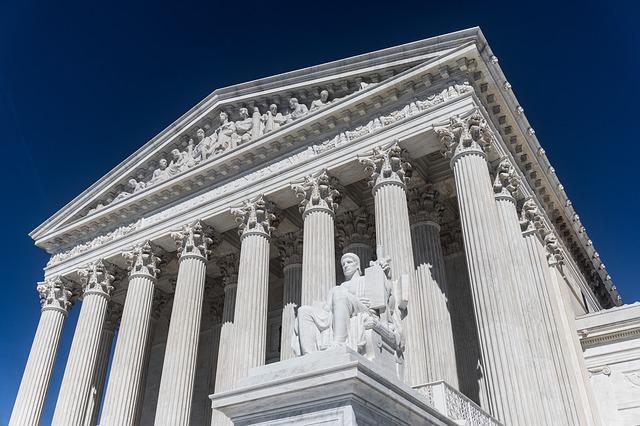States urge Supreme Court to halt EPA’s ‘good neighbor’ air pollution rule
By LISA WOELFL
Capital News Service
WASHINGTON – Supreme Court justices on Wednesday appeared divided over whether the court should suspend federal air pollution regulations in upwind states until a lower court rules on a pending case against the Environmental Protection Agency.
At issue is the federal “good neighbor” rule, part of the Clean Air Act, that imposes strict pollution limits on upwind states, as their smog and fine particles travel to the East Coast downwind states, including Maryland.
Ohio, Indiana and West Virginia have sued the Environmental Protection Agency over the rule, arguing that their state plans cost less and do enough to eliminate significant pollution in downwind states. The case is pending at the U.S. Court of Appeals for the D.C. Circuit.
The upwind states were joined by emission-heavy industries in their emergency plea to the Supreme Court to put the EPA regulations on hold until the lower court reaches a verdict.
Justice Ketanji Brown Jackson repeatedly questioned why the Supreme Court should intervene when no lower court has decided on the matter yet.
“I’m trying to understand what the emergency is,” she said.
Mathura Sridharan, who represented the upwind states, said that they were spending “immense sums” to comply with the federal rule at “breakneck speed.” The states were facing the threat of power and heating shortages, as “at least some grid operators” have pointed out, Sridharan said.
Jackson countered that the argument boiled down to the states not wanting to follow the law while challenging it.
Justice Brett Kavanaugh was more open to the arguments of the upwind states.
“Both sides have a strong public interest, in my view,” he said, referring to the economic costs of stricter environmental protections.
Judith Vale, who represented downwind states that champion the “good neighbor” rule, said that the costs for upwind states were less expensive than the harm their pollution caused.
Vale argued that downwind states like New York and Connecticut have issues meeting the EPA’s air quality requirement and their industries, which already comply with much stricter rules, suffer.
The lawyer for the upwind industry groups retorted: “This is not a very, very significant downwind problem. This is a minuscule problem.”
Reporters and analysts at multiple news outlets anticipate that the Supreme Court’s conservative majority will side with upwind states and block EPA’s rule while litigation continues in lower courts.
Up to 70% of Maryland’s smog and fine particle air pollution originates in upwind states, according to a report by the state’s Department of Environment.
Paul Billings, senior vice president at the American Lung Association, told Capital News Service that “people in downwind states like Maryland breathe dirty air because power plants in Ohio are not turning on pollution controls.”
Nationwide, one in three people is exposed to unhealthy levels of air pollution, according to the association’s latest report.
“There are real consequences for everyone who breathes,” Billings said about the Supreme Court case.
The number of days with unhealthy levels of ozone, commonly referred to as smog, are declining dramatically in Maryland. The state saw a decrease of 94% since 2000, according to data from the Maryland Department of the Environment.

Baltimore Post-Examiner is run by a creative cadre of dedicated journalists – some who worked at the Washington Post, Baltimore Examiner and other regional and national publications. It’s the Post-Examiner because we love the play on the word “Post” but we are also hoping to answer that question: What’s next after newspapers? We see a lot of websites come and go – and many simply are not making it for various reasons. We have been a model of success since we launched in 2012 with “a little bit of everything” and we aim to continue to break that cycle of websites coming and going.

